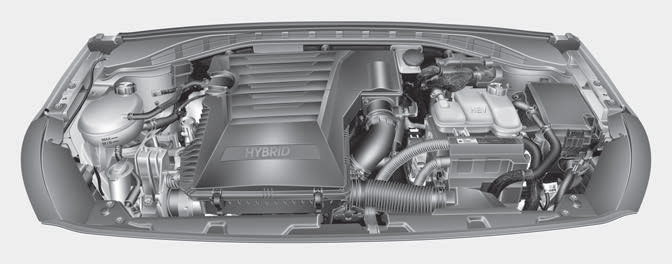Hyundai Ioniq: Engine Control System / Purge Control Solenoid Valve (PCSV). Repair procedures
| 1. | Turn the ignition switch OFF. |
| 2. | Disconnect the PCSV connector. |
| 3. | Measure resistance between the PCSV terminals 1 and 2. |
| 4. | Check that the resistance is within the specification. Specification : Refer to "Specification" |
|
| 1. | Turn the ignition switch OFF and disconnect the battery negative (-) cable. |
| 2. | Remove the air cleaner assembly (Refer to Engine Mechanical System - "Air Cleaner") |
| 3. | Disconnect the purge control solenoid valve connector (A). |
| 4. | Disconnect the vapor hose (B) from the purge control solenoid valve. |
| 5. | Remove the purge control solenoid valve. 
|
| •
| Note that internal damage may occur when the component is dropped. If the component has been dropped, inspect before installing. |
|
| •
| Use care to keep foreign material out of the valve. |
|
| 1. | Install in the reverse order of removal. |
DescriptionContinuous Variable Valve Timing (CVVT) system advances or retards the valve timing of the intake and exhaust valve in accordance with the ECM control signal which is calculated by the engine speed and load...
Other information:
CD (Charge Depleting, Electric) mode : The high-voltage (hybrid) battery
is used to drive the vehicle.
CS (Charge Sustaining, Hybrid) mode : The high-voltage (hybrid) battery
and gasoline engine is used to drive the vehicle.
Information
Even when the battery charging rate is high and driving in electric mode is
possible, engine may turn on in some areas to protect the system...
1. Steering wheel audio controls/Bluetooth® wireless technology hands-free controls
2. Instrument cluster
3. Horn
4. Driver’s front air bag
5. Cruise controls/Smart cruise controls
6. Engine Start/Stop button
7. Light control/Turn signals
8. Wiper/Washer
9...
Categories

1. Engine oil filler cap
2. Engine oil dipstick
3. Engine coolant cap
4. Engine coolant reservoir
5. Inverter coolant reservoir
read more
 CVVT Oil Control Valve (OCV). Description and operation
CVVT Oil Control Valve (OCV). Description and operation



